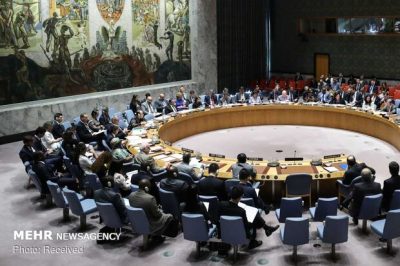The JCPOA Nuclear Deal: Why Europe Cannot Use the ‘Snap Back’ Mechanism Against Iran

Western media are likely to jump on the ‘snapback mechanism’ wagon now that Iran has released details about the second stage of its reduction in commitments to the nuclear deal, also known as the Joint Comprehensive Plan of Action (JCPOA).
The snap back mechanism is a tool that allows the old United Nations sanctions to be reimposed on Iran without a vote on the Council, in the case of Tehran being found to be in serious violation of the terms of the nuclear agreement, under certain conditions and after following the predefined steps.
The other side wants to make it look as if the recent measures by Iran in reducing the level of its commitments to the JCPOA – which are in accordance with Article 26 and 36 of JCPOA – are a violation of the agreement in order to use the snap back mechanism against Iran.
But there are five reasons as to why the snap back mechanism cannot be used against Iran in this case.
One: The snap back mechanism has been designed to prevent Iran from violating the agreement. In other words, the mechanism has been set up in the case of Iran being the first party to withdraw from the nuclear deal. Of course, the first side to have left the agreement was the United States, and Iran’s compliance with its commitments have been confirmed time and again in all of the IAEA’s reports.
Two: According to the text of the JCPOA, the other side can use the snap back mechanism only when it “believes” that Iran’s performance is an instance of a major lack of compliance. According to a fundamental legal principle, this “belief” must be accompanied by “good faith”. This is while none of the remaining parties to the JCPOA can actually claim with “good faith” that they “believe” in Iran’s major lack of compliance, since all of Iran’s measures have been legal, and are clearly taken so that all sides to the deal would fully implement their own commitments.
Three: Europe’s resorting to the snap back mechanism would be in fact a mockery of the international law, the UN Security Council and the UN’s collective security system. In other words, it would be the first time in history when the Security Council would be used to punish a country that only intends to use its legal tools to force others to implement a Security Council resolution (2231), and an agreement endorsed by the body.
Four: In order to accuse Iran of a violation, European powers first need to prove Iran’s ill intentions. This is while they all know that Iran’s only motivation and intention to reduce commitments is a way to actually revive the nuclear agreement.
Five: What European powers promised under the deal was never a “ceremonial” removal of sanctions. Article 3 of Appendix 2 of JCPOA clearly tasks Europe with removing the “impacts” of economic and financial sanctions. This means that the European sides are now clearly in violation of their commitments.
*
Note to readers: please click the share buttons above or below. Forward this article to your email lists. Crosspost on your blog site, internet forums. etc.
Featured image is from Mehr News Agency

